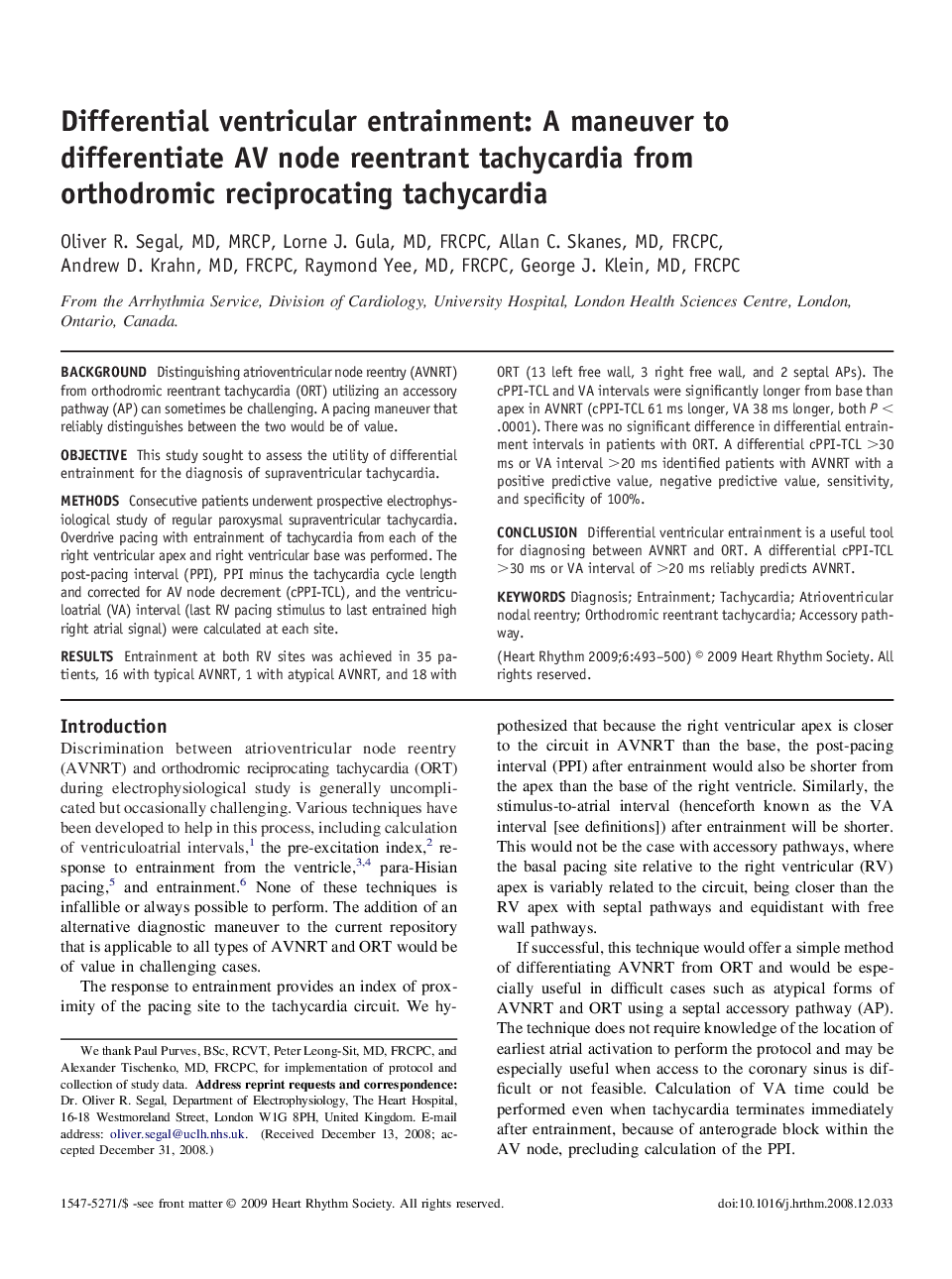| Article ID | Journal | Published Year | Pages | File Type |
|---|---|---|---|---|
| 2925026 | Heart Rhythm | 2009 | 8 Pages |
BackgroundDistinguishing atrioventricular node reentry (AVNRT) from orthodromic reentrant tachycardia (ORT) utilizing an accessory pathway (AP) can sometimes be challenging. A pacing maneuver that reliably distinguishes between the two would be of value.ObjectiveThis study sought to assess the utility of differential entrainment for the diagnosis of supraventricular tachycardia.MethodsConsecutive patients underwent prospective electrophysiological study of regular paroxysmal supraventricular tachycardia. Overdrive pacing with entrainment of tachycardia from each of the right ventricular apex and right ventricular base was performed. The post-pacing interval (PPI), PPI minus the tachycardia cycle length and corrected for AV node decrement (cPPI-TCL), and the ventriculoatrial (VA) interval (last RV pacing stimulus to last entrained high right atrial signal) were calculated at each site.ResultsEntrainment at both RV sites was achieved in 35 patients, 16 with typical AVNRT, 1 with atypical AVNRT, and 18 with ORT (13 left free wall, 3 right free wall, and 2 septal APs). The cPPI-TCL and VA intervals were significantly longer from base than apex in AVNRT (cPPI-TCL 61 ms longer, VA 38 ms longer, both P < .0001). There was no significant difference in differential entrainment intervals in patients with ORT. A differential cPPI-TCL >30 ms or VA interval >20 ms identified patients with AVNRT with a positive predictive value, negative predictive value, sensitivity, and specificity of 100%.ConclusionDifferential ventricular entrainment is a useful tool for diagnosing between AVNRT and ORT. A differential cPPI-TCL >30 ms or VA interval of >20 ms reliably predicts AVNRT.
